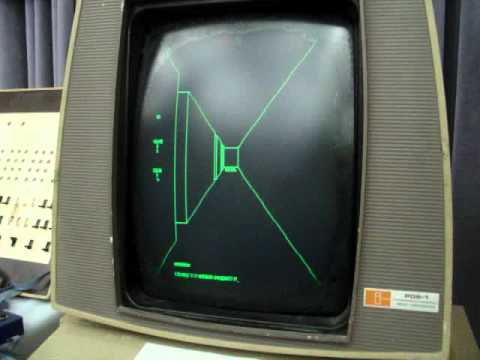While companies like IBM have stood the test of time and remain instantly recognizable brand names in the computer world, many of the early pioneers in the field did just as much work without nearly as much lasting recognition.
The PDS-1 minicomputer, the creation IMLAC is most notable for, is proof of this. But what is it about the PDS-1 minicomputer that’s so historic? How did it work, and how did it come to be? This guide to the history of the PDS-1 minicomputer will answer all these questions and more.
Quick Facts
- Created
- 1970
- Creator (person)
- The IMLAC Corporation
- Original Use
- Personal graphics computer
- Cost
- $8,300
3 Facts about the PDS-1 Minicomputer
- Contrary to what you might think, “IMLAC” is not an acronym: It’s the name of a character from the novel The History of Rasselas, Prince of Abissinia by Samuel Johnson. Imlac was a poet, and the developers of the PDS-1 minicomputer liked the sound of it.
- The PDS-1 minicomputer’s retail price of $8,300 might seem like a lot of money for a supposedly affordable personal computer, but it was actually 1/30th the price of its closest competitor, the IBM 2250. By comparison, the PDS-1 was far cheaper.
- Mazewar, the very first computer game to incorporate online multiplayer functionality, was made using a couple of PDS-1s.
PDS-1 Minicomputer History
The PDS-1 minicomputer was a revolutionary product from the IMLAC Corporation released in 1970. As the first low-cost interactive computer graphics display, the PDS-1 quickly became popular among those in the tech world who could afford its $8,300 price point. This IMLAC minicomputer gave users much of the same functionality of an enormous and expensive IBM computer but at a mere fraction of the cost, making it a big step in the direction of the computer workstations and displays we know and use today.
The importance of this historic piece of technology becomes all the more clear once you understand how it worked and what it was capable of.

PDS-1 Minicomputer: How It Worked
The PDS-1 consisted of an operator’s console (which included a 14-inch CRT display screen and a keyboard) and a processing unit (or CPU). It also had an optional compact control console, which provided the user with a way to control the CPU directly. The PDS-1’s graphic display was capable of displaying around 1,200 characters, 500/800 inches of graphics, or any combination of these two.
It used a vector display processor as opposed to the raster graphics of modern computer displays. Interestingly enough, it was also capable of being oriented in either the vertical or horizontal direction.
What’s more, the IMLAC PDS-1 was programmed in assembly language. Users pointed and made selections on the screen using a light pen, which was an early precursor to the mouse as we know it today. Instead of the mouse mechanics we’re used to — moving around a handheld object on a level surface and clicking a button to make selections — one would simply point at the screen with the light pen and press a pedal at their feet. All of these new and never-before-seen features made this little computer a big part of technology’s history.
PDS-1 Minicomputer: Historical Significance
The PDS-1 minicomputer was quite popular among a small group of universities and research & experimental design organizations. For this reason, with its much lower price than the IBM 2250 making it a really attractive and far more affordable piece of technology, the PDS-1 was used in many early pioneering computer applications throughout the 1970s. This is where the minicomputer’s historical significance lies: in the sheer number of groundbreaking features available to users at such an early time in the history of the personal computer.
The minicomputer’s assembly language and its impressive graphic display made it quite useful for many different kinds of programs. The PDS-1 was often used with another flagship IMLAC product, a typesetting program called CES.
Furthermore, the FRESS hypertext system also had enhanced capability and usability if accessed from a PDS-1 system, making the minicomputer all the more attractive to those in the field. With the PDS-1, users could create hyperlinks with just a light pen and a couple of keystrokes. Multi-window editing was also possible when using FRESS on the PDS-1.
Additionally, the PDS-1 had the capability to run remote graphics programs — just like the ones that ran on the Stanford AI Lab’s main computer. These graphics programs combined with the aforementioned assembly language made the minicomputer capable of running online multiplayer computer games, which were unheard of at the time.
The PDS-1 connected to a host PDP-10 computer running ITS over Arpanet located at MIT. Up to eight players running PDS-1 minicomputers could access MIT’s host at a time. The PDS-1 was so important during these early days of Arpanet, back when network graphics protocols were still under consideration. All in all, it wasn’t just significant for its time — the PDS-1 remains a real cornerstone of the modern computers we know and use today.
The image featured at the top of this post is ©Bruce Damer, CC BY 2.5, via Wikimedia Commons.
